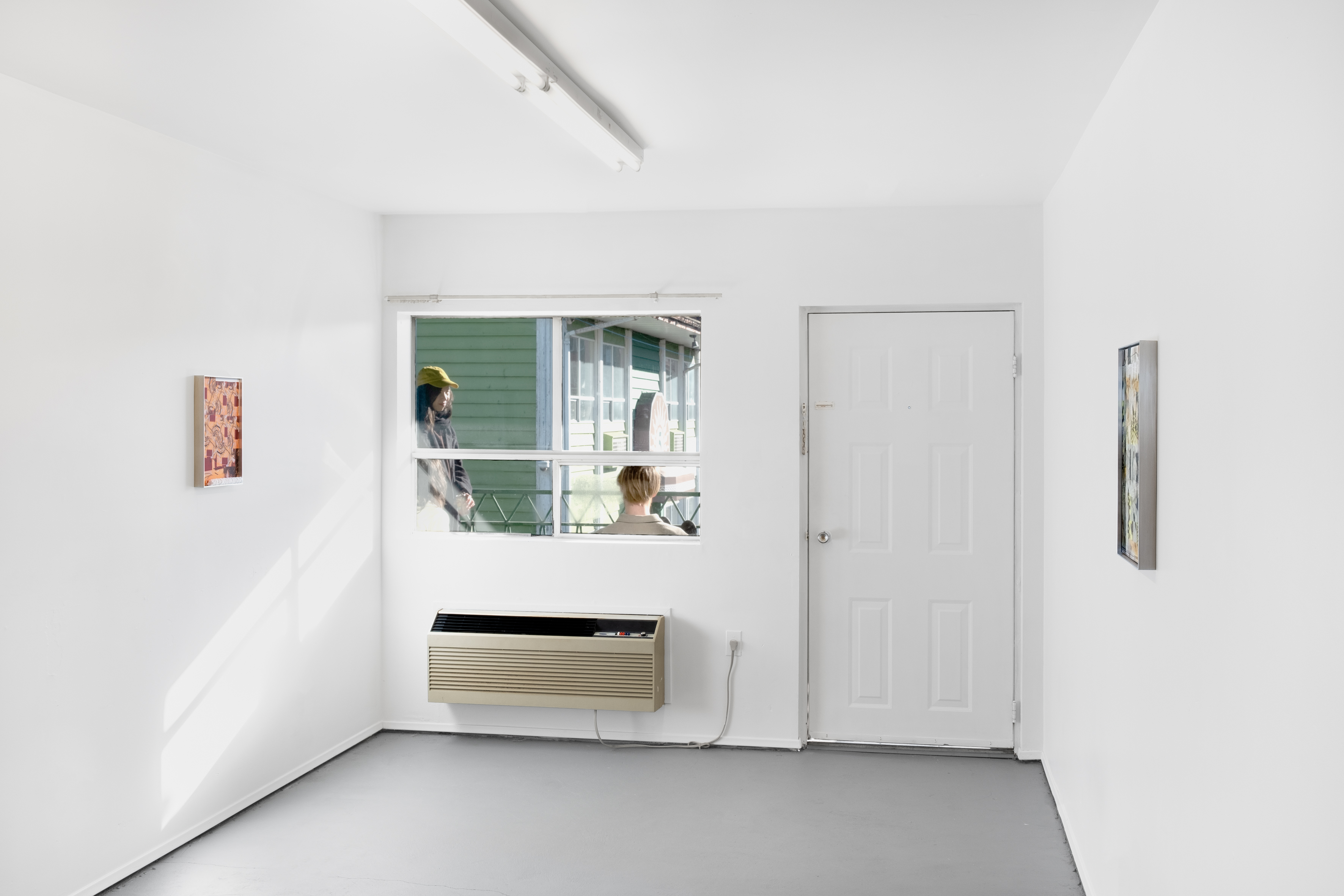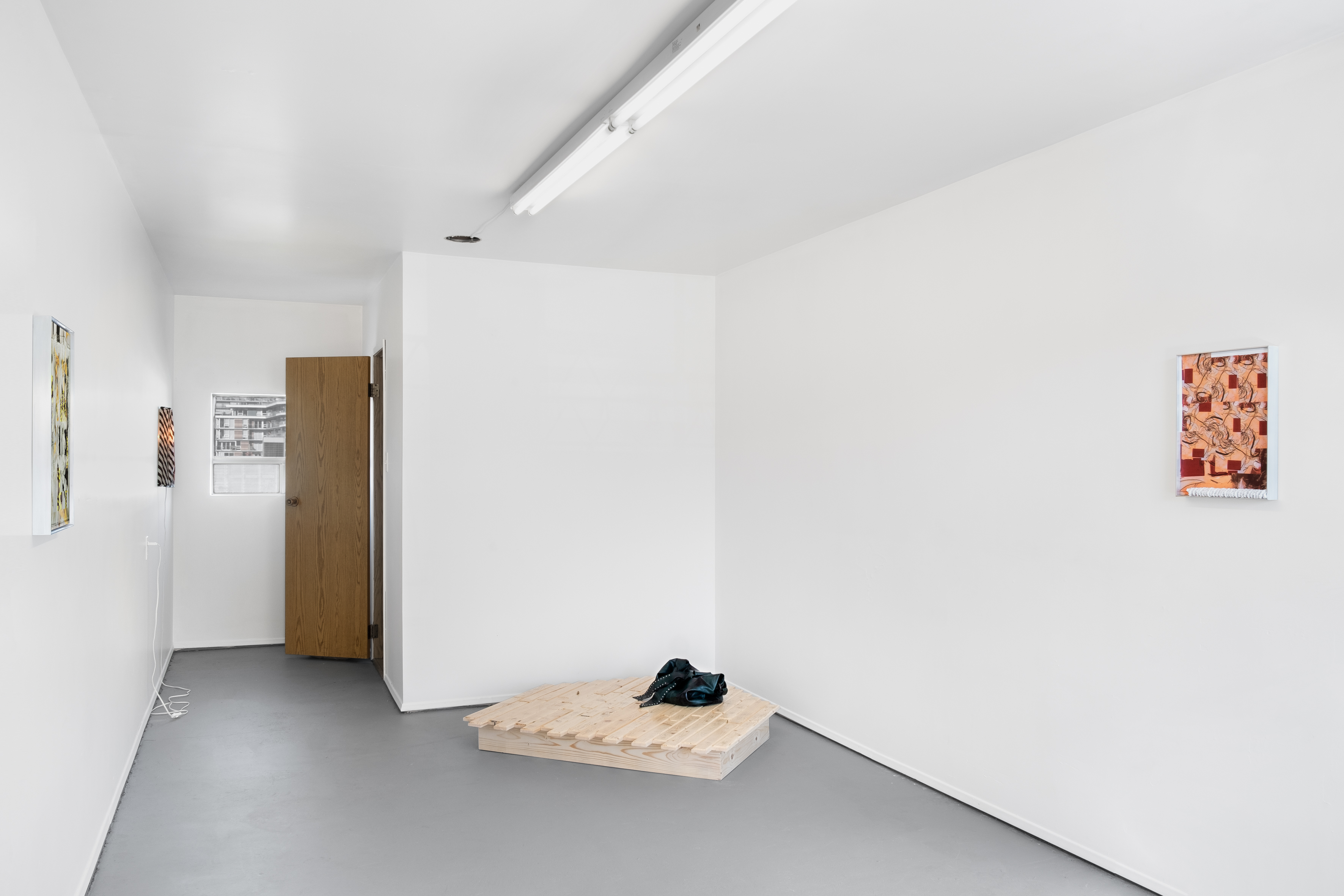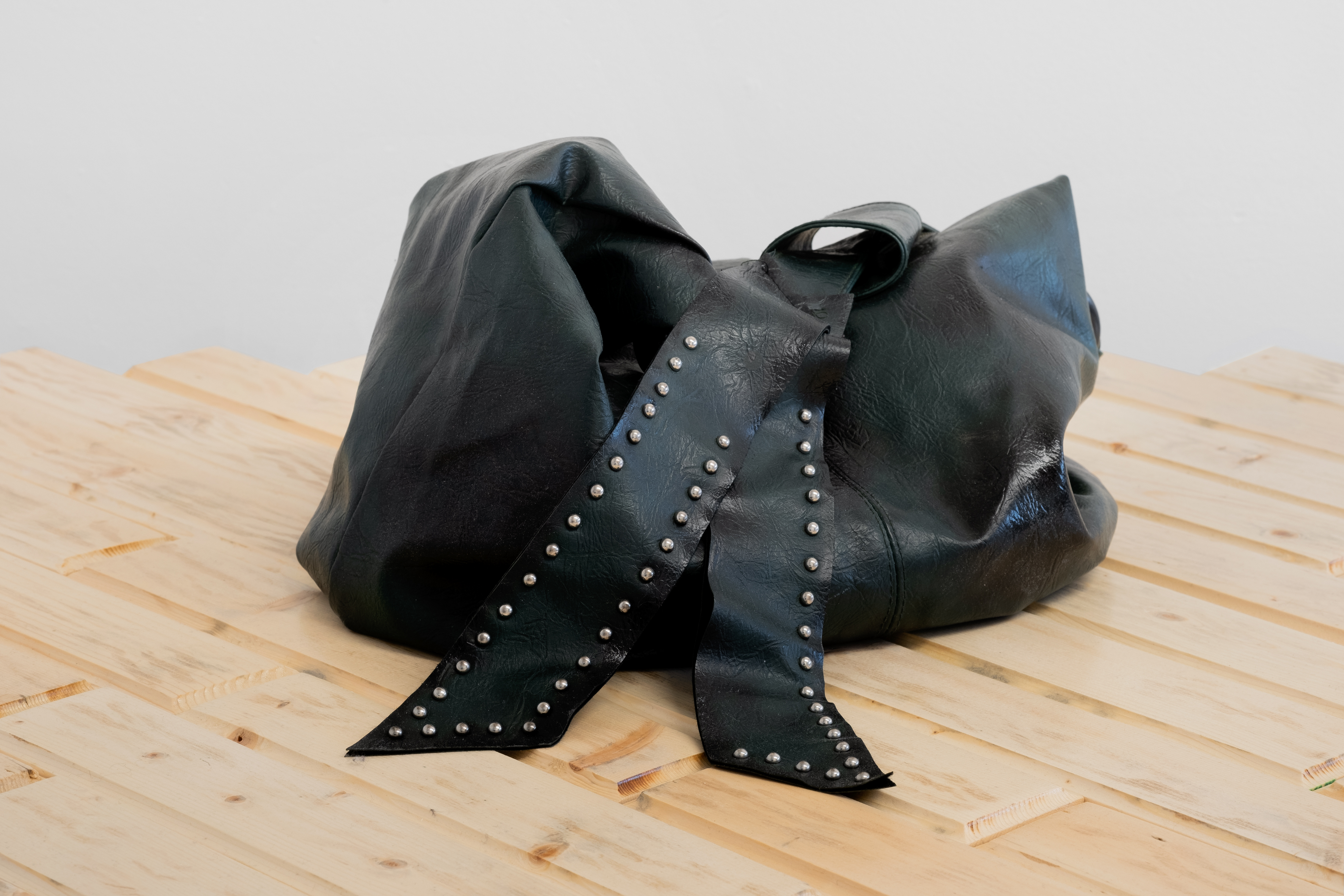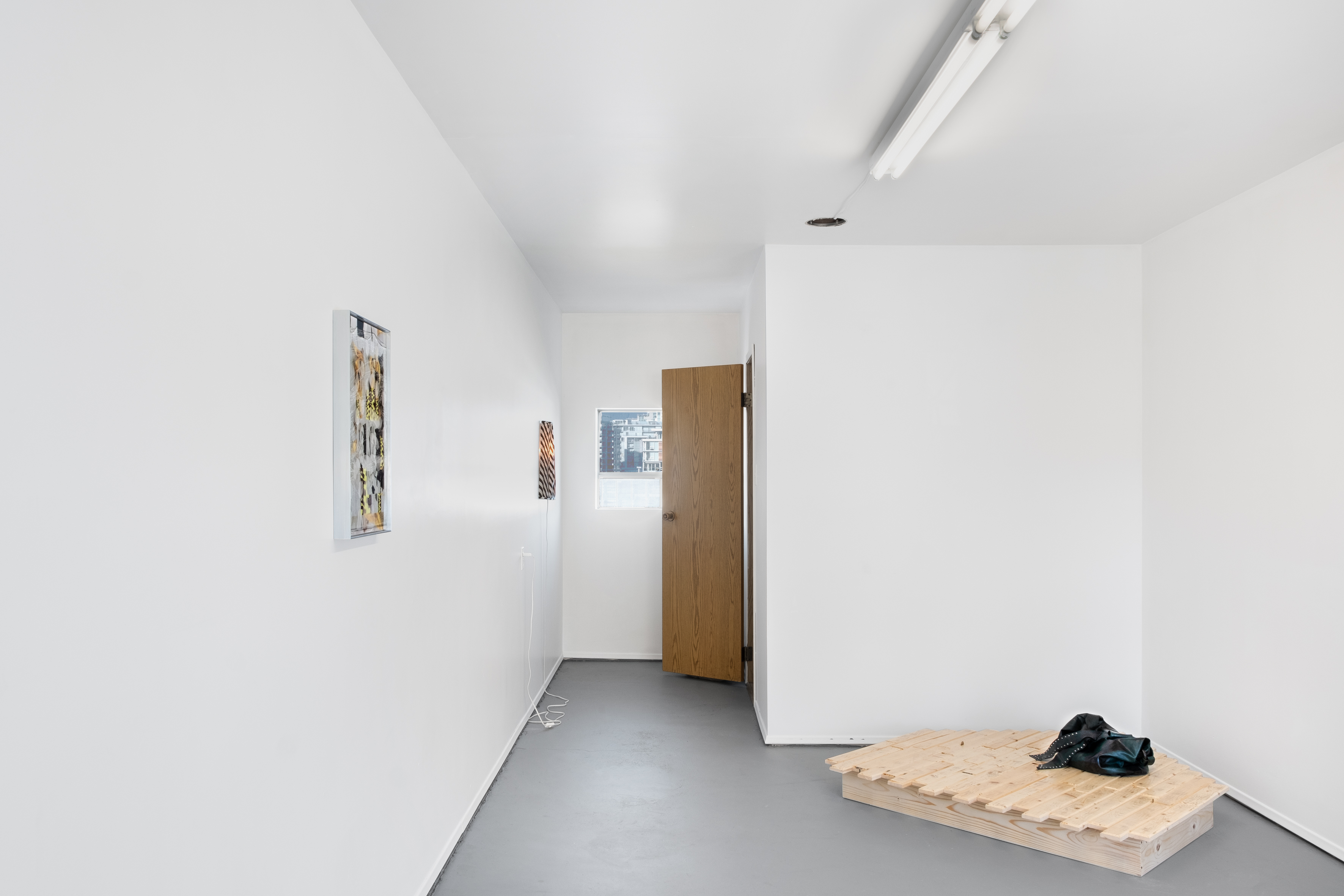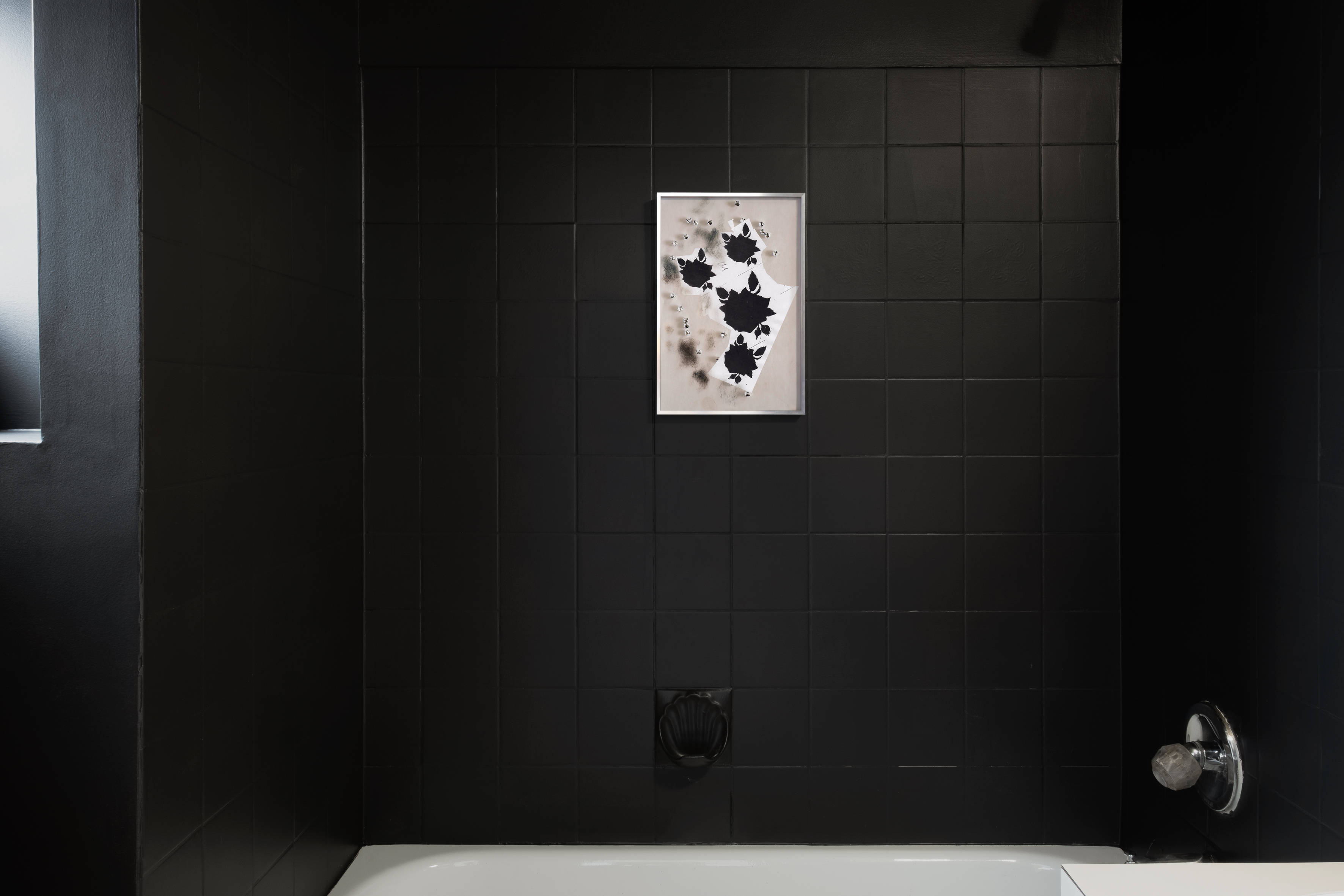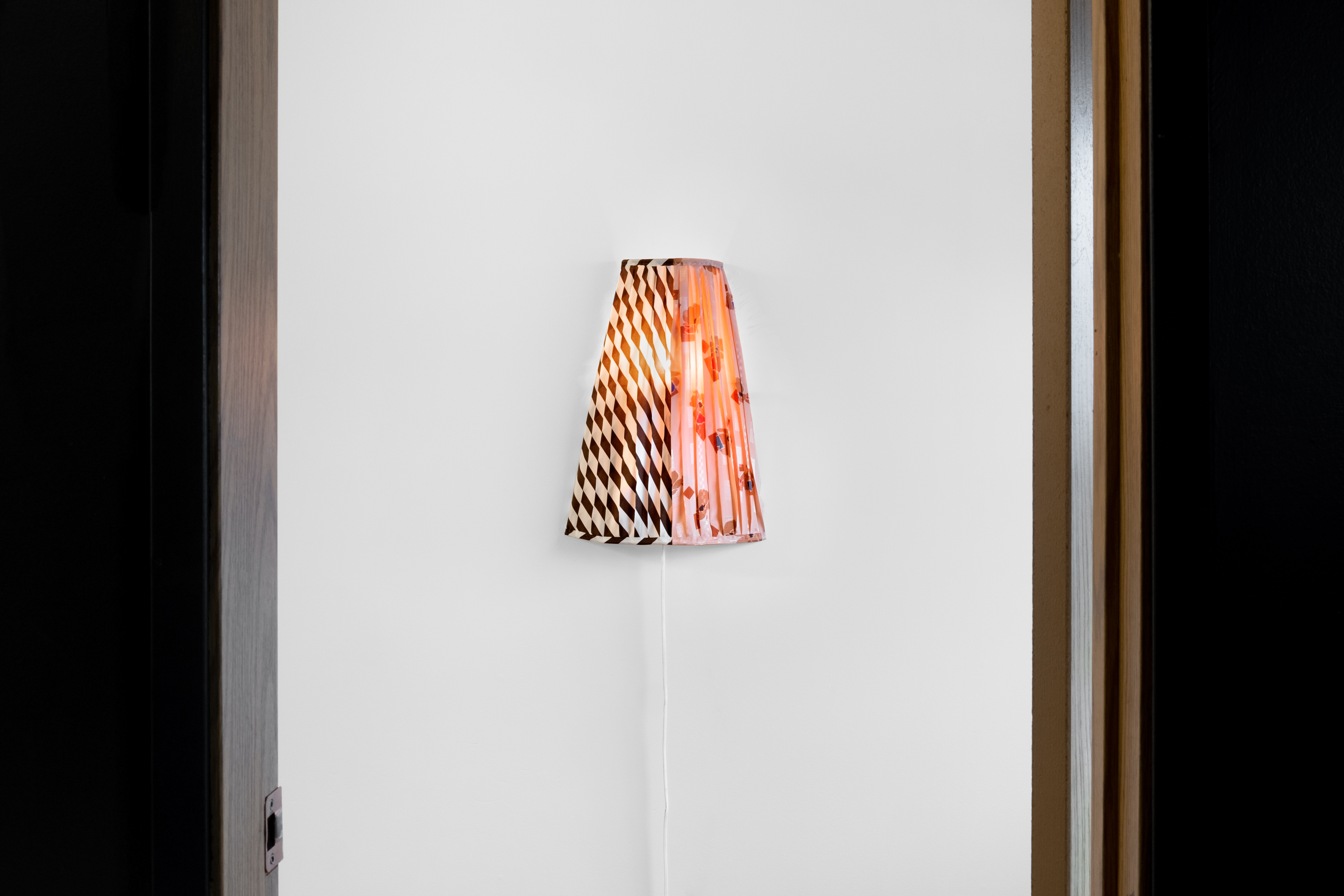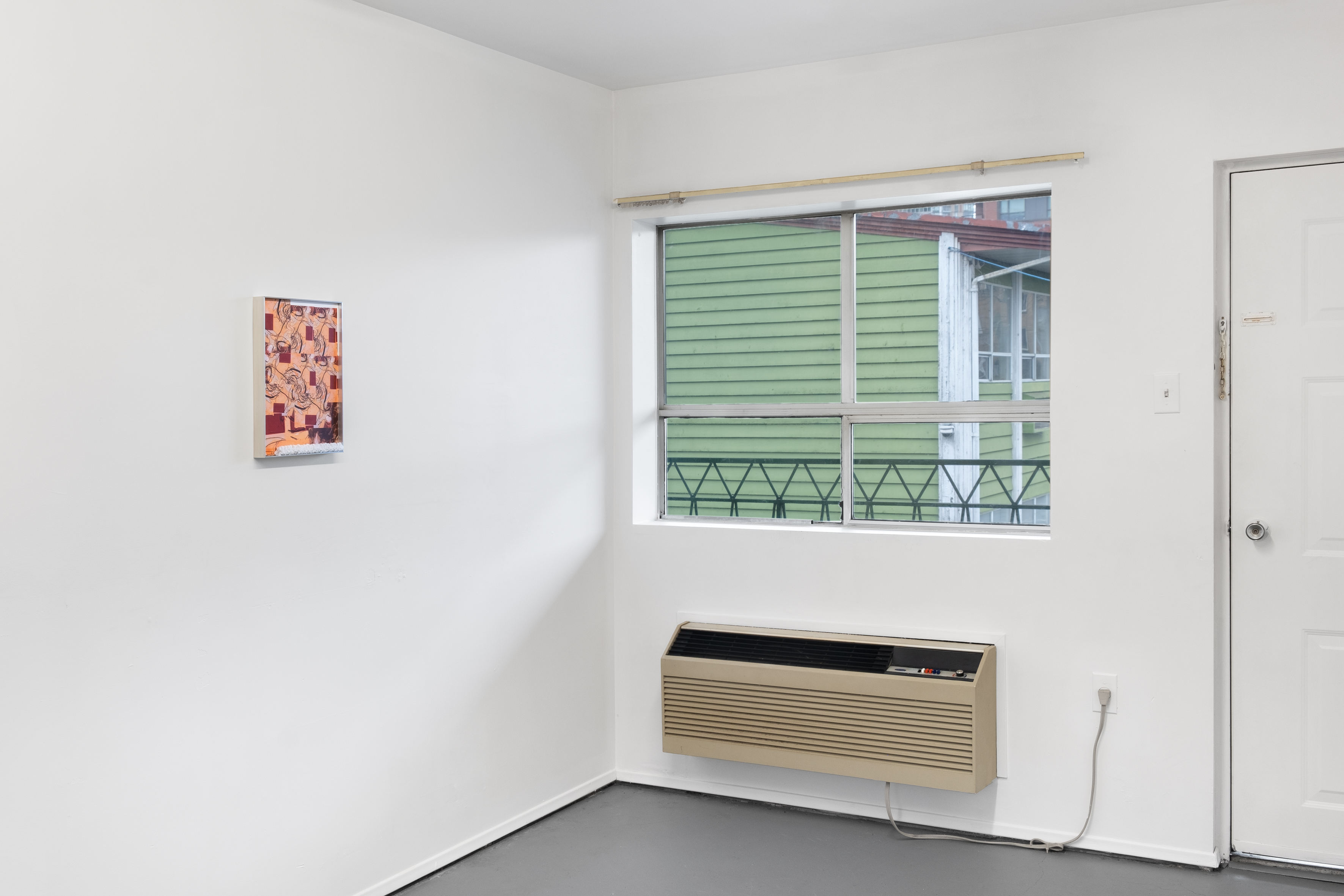Prop, 2022
A duo show of Amanda Crain and Natasha Katedralis organized by Felix Rapp at the former City Centre Motor Inn.
Broken glass is sugar and the horizon is a painting. Wether on screen or on stage, the believability of theatre, film and television relies on our static perspective of the events. Side-step, climb-up or move too close and the illusion splinters into irreparable fragments — “I can’t unsee it now!” Taking its cues from theatre, the staging of homes for sale employs a similarly two-dimensional illusion. Stagers scrub the essential quirks that make home feel like home and replace them with replica sofas and freshly patinaed end tables. The overstuffed pillows and turned-around family photos imply that this sofa is not intended for sitting, these images not for our eyes. An agent ushers us over and we’re kindly asked to keep to the front of house.
The word prop is an abbreviation of property. Like the decorative objects introduced in the staging of property for sale, props are used to create realistic scenes and scenarios in which actors perform. A real knife, for example, is distinct from a prop knife because it is incapable of wounding. For performers and audiences alike it’s often difficult to tell what’s real and what’s fake. Objects found or purchased blend into fabrications. In one corner, an abandoned handbag slouches on a parquet platform. Across a delicately distorted arrangement of ephemera is spun in polyethylene as-if immobilized for the camera. Just as these objects have come to take the place of wood veneer double beds and TV stands, tenants have also moved in place of guests.
In the parking lot, a dumpster holds the broken artefacts of seventy years of hospitality. Every inkling of ornament has been stripped from these rooms in favour of cold ubiquity. Only its exterior gives clues to its past where between guests, film crews dress sets and rig lights for productions about zombies and superheroes. Now for sixty million all of it is slated for demolition. A presentation centre nearby introduces prospectors to monstrous modulations on steel and glass. Adjacent to keywords on lifestyle, free catalogues reveal the panoramic views of the upper stories. Just high up enough to where scenes of life down below are reserved to pixels on screens.
A duo show of Amanda Crain and Natasha Katedralis organized by Felix Rapp at the former City Centre Motor Inn.
Broken glass is sugar and the horizon is a painting. Wether on screen or on stage, the believability of theatre, film and television relies on our static perspective of the events. Side-step, climb-up or move too close and the illusion splinters into irreparable fragments — “I can’t unsee it now!” Taking its cues from theatre, the staging of homes for sale employs a similarly two-dimensional illusion. Stagers scrub the essential quirks that make home feel like home and replace them with replica sofas and freshly patinaed end tables. The overstuffed pillows and turned-around family photos imply that this sofa is not intended for sitting, these images not for our eyes. An agent ushers us over and we’re kindly asked to keep to the front of house.
The word prop is an abbreviation of property. Like the decorative objects introduced in the staging of property for sale, props are used to create realistic scenes and scenarios in which actors perform. A real knife, for example, is distinct from a prop knife because it is incapable of wounding. For performers and audiences alike it’s often difficult to tell what’s real and what’s fake. Objects found or purchased blend into fabrications. In one corner, an abandoned handbag slouches on a parquet platform. Across a delicately distorted arrangement of ephemera is spun in polyethylene as-if immobilized for the camera. Just as these objects have come to take the place of wood veneer double beds and TV stands, tenants have also moved in place of guests.
In the parking lot, a dumpster holds the broken artefacts of seventy years of hospitality. Every inkling of ornament has been stripped from these rooms in favour of cold ubiquity. Only its exterior gives clues to its past where between guests, film crews dress sets and rig lights for productions about zombies and superheroes. Now for sixty million all of it is slated for demolition. A presentation centre nearby introduces prospectors to monstrous modulations on steel and glass. Adjacent to keywords on lifestyle, free catalogues reveal the panoramic views of the upper stories. Just high up enough to where scenes of life down below are reserved to pixels on screens.
